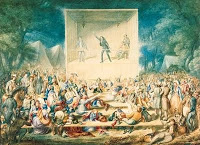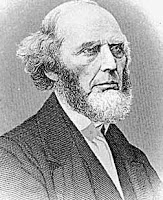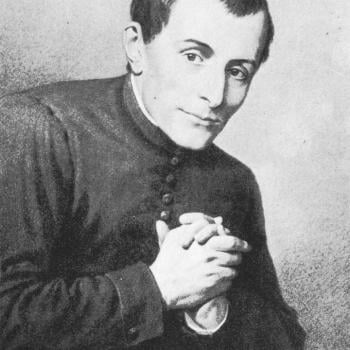 One form of preaching that has captivated the American Religious Landscape for the entire history of this country is what some might call “invitational preaching.” In this school of preaching the speaker’s aim is to convert the listener. Conversion in this form of preaching is not always aimed at Non-Christians, but can also be catalyst to conform a believer’s life and heart more to the message or The Gospel. It can be seen in the preaching of John Wesley, George Whitefield, and Charles Finney to name a few.
One form of preaching that has captivated the American Religious Landscape for the entire history of this country is what some might call “invitational preaching.” In this school of preaching the speaker’s aim is to convert the listener. Conversion in this form of preaching is not always aimed at Non-Christians, but can also be catalyst to conform a believer’s life and heart more to the message or The Gospel. It can be seen in the preaching of John Wesley, George Whitefield, and Charles Finney to name a few.
In the popular imagination we often look at this process as a minister sharing about sin and atonement and calling people to come forward to pray a prayer. This week I read “ Preaching for Conversion” by Charles Finney and “Invitational Preaching in the Twenty-First Century” by Roberto Escamilla and it raised some issues about this old form.
Finney and Escamilla are both proponents of sermons that speak to the listener, and in many ways hold the same values. They both believe a sermon should by “colloquial is style,” Parabolic or incorporate narrative in some way, relevant to the hearer, and charismatic in delivery. They both look to secular sources for rhetorical inspiration. Overall they are both interested much more in reaching the hearer then following a proper decorum. They do, however, part ways over some issues.
 Finney might be characterized as a “fiery preacher.” His desire is for the hearer to repent from sin. He instructs the preacher to inspire this repentance by shocking the listener out of their stupor. Finney even goes as far as to suggest changing ones doctrinal stance to shake the complacency of a hearer. For him one of the most frustrating things he sees in other preachers is, what he sees as, an over emphasis on the work of God, and a lack of discussion of a person’s own part in doing the repentance.
Finney might be characterized as a “fiery preacher.” His desire is for the hearer to repent from sin. He instructs the preacher to inspire this repentance by shocking the listener out of their stupor. Finney even goes as far as to suggest changing ones doctrinal stance to shake the complacency of a hearer. For him one of the most frustrating things he sees in other preachers is, what he sees as, an over emphasis on the work of God, and a lack of discussion of a person’s own part in doing the repentance.
Escamilla on the other hand shy’s away from words like ‘conversion’ and ‘sinners.’ Instead he focuses on specific forms of social action that can better integrate a hearer into the life of the spirit. For him the “Life of the Spirit” is paramount. It is the power that enables a preacher to reach a hearer and the power that enables the listener to respond. This is very much unlike Finney. Escamilla also departs from Finney in  his demeanor in the pulpit. Escamilla feels that a preacher must move away from the “fiery” preaching of old and instead make the listener feel “accepted as they are.”
his demeanor in the pulpit. Escamilla feels that a preacher must move away from the “fiery” preaching of old and instead make the listener feel “accepted as they are.”
Finney wrote and preached in a very different place and time then we live in today. Escamilla raises a good question in his exposition on preaching. New cultures require new methodology. We must decide what we carry with us and what we leave behind as we carry the message of the cross to future generations. “Invitational preaching” has changed with every generation, but the call to be transformed by Christ has not. No matter how the vessel changes our fidelity to the living water contained within must not.












